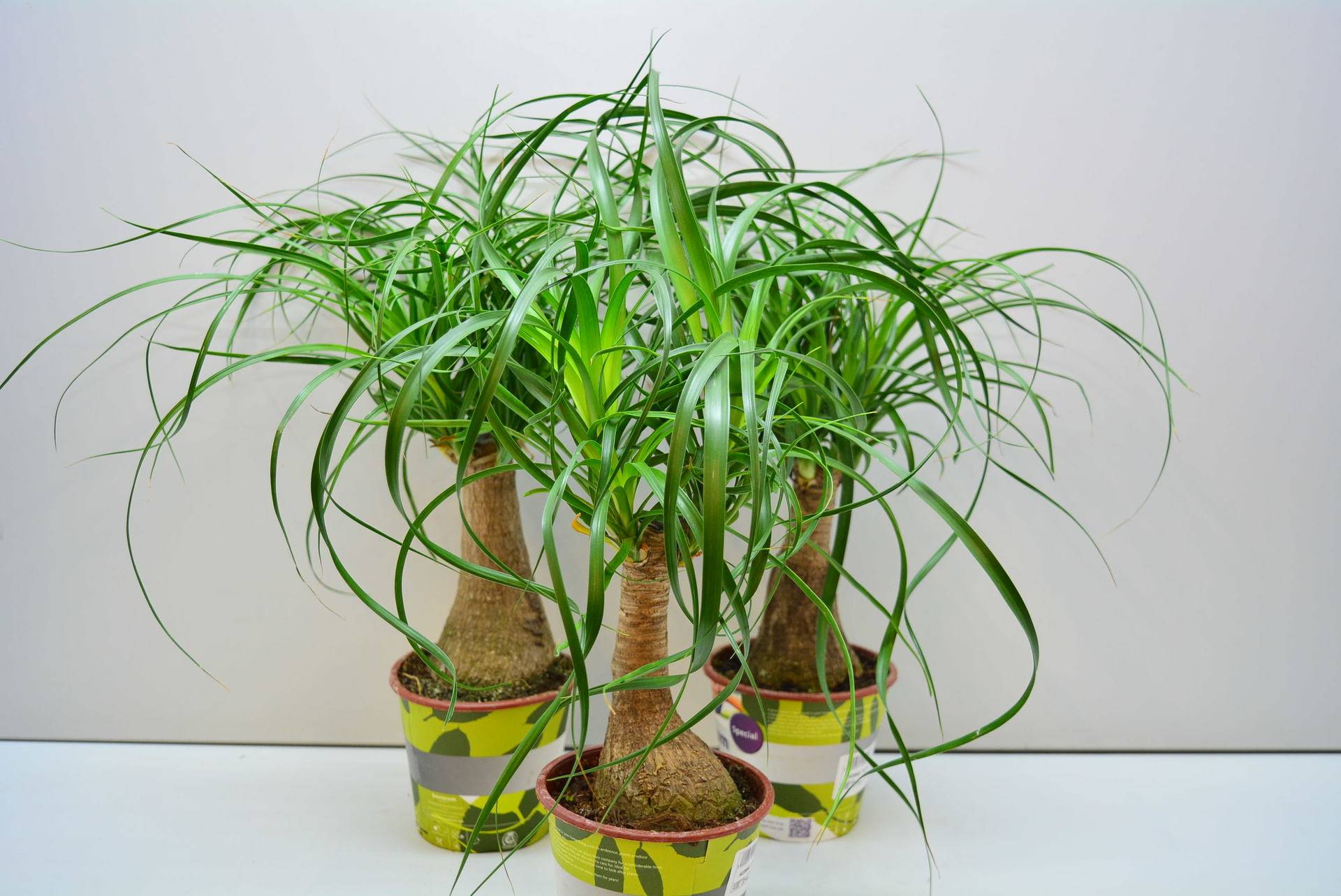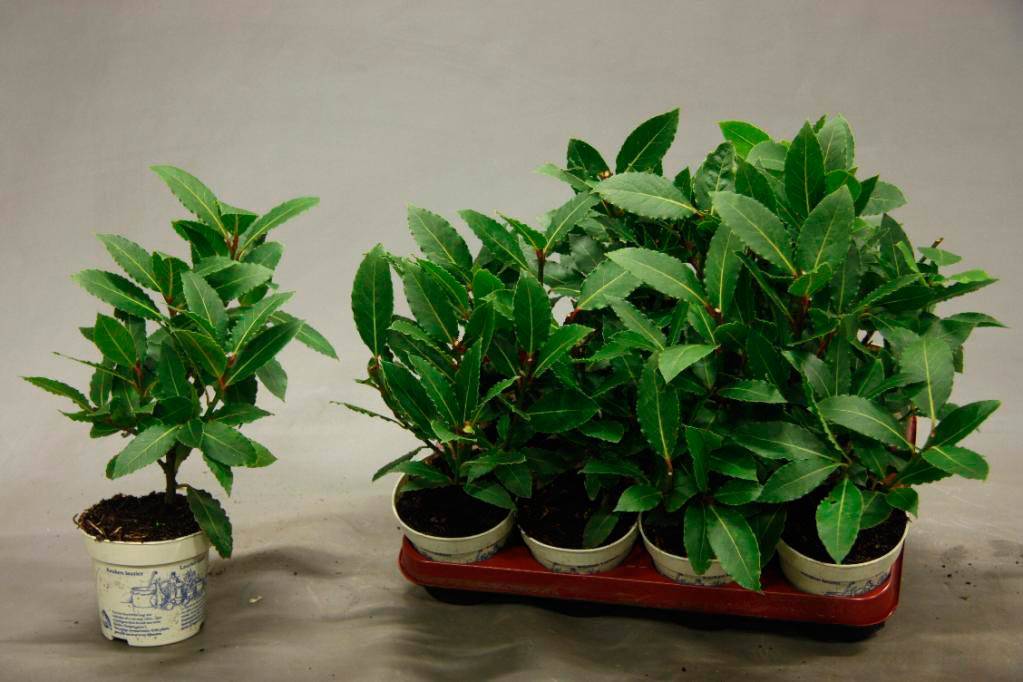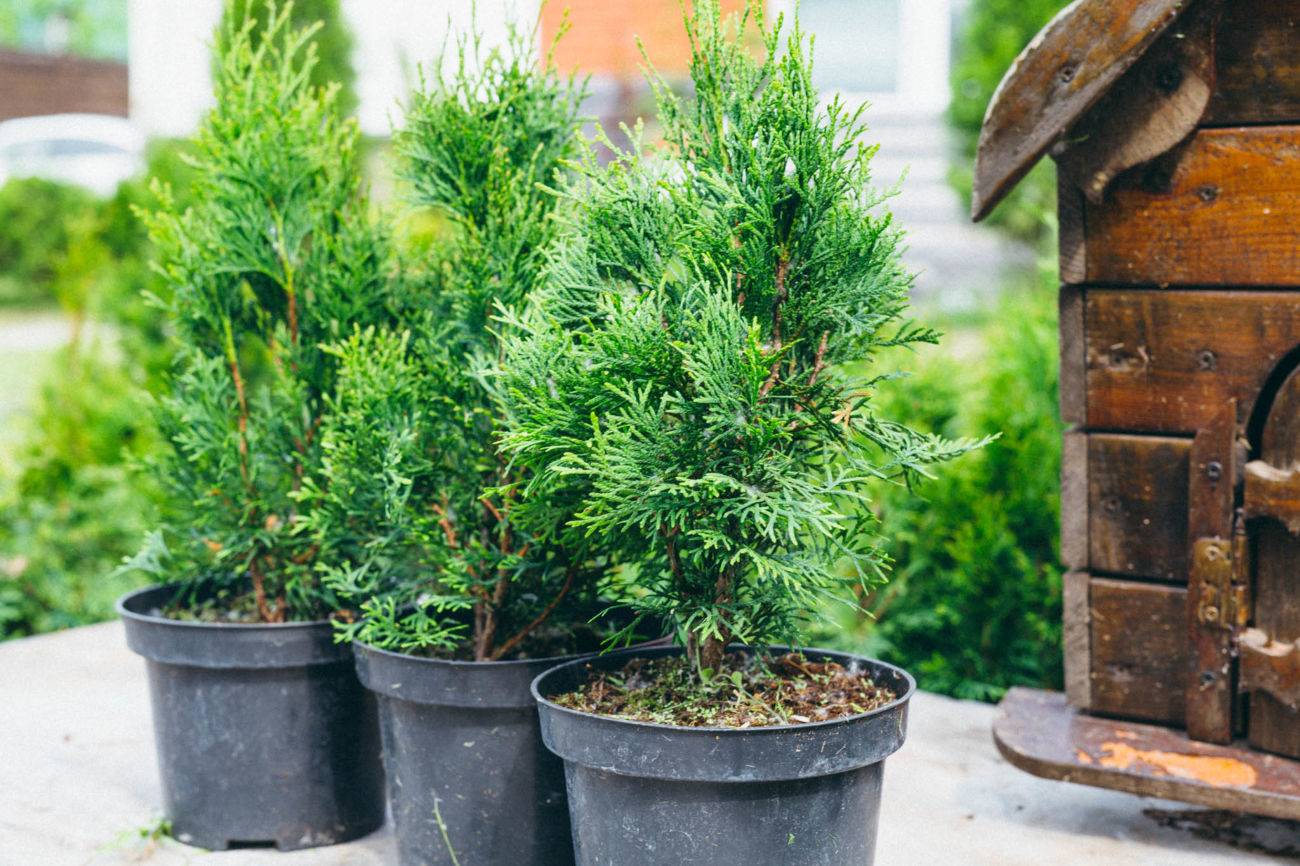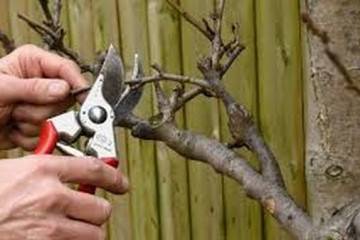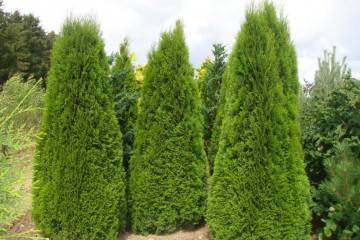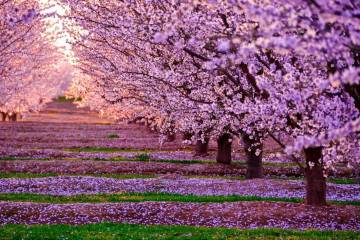Indoor trees - laurel, nolina or bottle tree, juniper
Content:
Growing trees in a pot is an increasingly popular activity. Such plants become a worthy decoration of interior design, a highlight of the room. The phytoncides emitted by them purify the air, stabilize the microclimate, and have a beneficial effect on health. And among the variety of breeds suitable for growing at home, it will not be difficult to choose the one that you really like.
Ways to use indoor trees
Ornamental trees for the home are the choice of owners of spacious real estate. They will help to place bright accents, harmoniously fit into the style of country, Provence, rustic, Mediterranean. Planted in stylish black or metallic containers, such representatives of the flora will be appropriate in ultra-modern interiors.
Importance in the interior
House trees are an easy way to give your home originality and identity. At the same time, they give rise to coziness and emphasize the special taste of the owner. Such plants look good in an antique-decorated room or the mysterious East. And tiny bonsai trees can be a decorative element that promotes relaxation. In the East, the practice of caring for a bonsai garden is popular to restore peace and quiet to oneself.
Here are some possibilities for using living trees in interior design:
- Place plants growing in tubs about 1.5 meters high on either side of the sofa or chair. They will help you completely relax, make a mental trip to the forest.
- They can be used to decorate office space, shops, studios, catering establishments. The main thing is that the selected breed grows in conditions suitable for it and looks harmonious against the background of the situation as a whole.
- You don't have to be limited to just trees. Some create a real tropical forest in their home: mosses and ferns find shelter under the crown, vines hang from the ceiling. It turns out a very beautiful space, the only drawback of which is the laboriousness of care.
- Large plants are used to highlight functional areas.
Mini potted versions
The oriental art of growing bonsai trees - bonsai - is also a popular trend in phytodesign. The homeland of bonsai is China, but the Japanese managed to bring the technique to perfection.
For cultivation in this manner, conifers and deciduous species are suitable, both those grown in the region and overseas guests. To give a dwarf shape, these trees are shaped in a special way.
Bonsai style allows you to grow more than 300 species of small trees, including blue maple, white pine, lemon, birch, cedar, sakura and many others. The standard plant height is no more than 1 meter. The required shape is given with the help of a wire.
Plants for growing in an apartment
A home tree in a pot is an original element of a room interior. To minimize the care of the plant, you should choose a suitable variety. Suitable for landing in:
- Bottle tree.
- Various citrus fruits: lemons, oranges. They can even be grown from the seed of a purchased fruit.
- Coffee and laurel trees. With proper care, some owners even managed to get a crop.
- Juniper.
- Palms and ficuses. These are classic potted plants, they are not perceived as exotic.
- Indoor maple. A tree up to 1.5 meters tall with a long elegant flowering in winter.
- Serpentine tree. The name was given to him by the specific color of the leaves, imitating the skin of a reptile.
You can choose other varieties, the main thing is that they are unpretentious in care, they tolerate the forced lack of light well. A brand new pot in which a unique plant grows will help the owner to survive a lot of pleasant minutes.
How to grow nolina - a bottle tree
Also, this unusual tree is known as the rock brachychiton. The barrel is non-standard, resembles a bottle, which is why the well-known name went. Historical homeland - Australia and Mexico. The hot climate and aridity of the southern regions are the reason for the unusual appearance. The hollow barrel promotes the accumulation of moisture, thanks to which the nolina survives for a long time without rain.
This is the bottle tree: home care requires knowledge of some specific features.
Varieties suitable for growing at home
In the wild, there are more than 30 types of elephant legs, but at home only a bent bent leaves can feel comfortable. In a pot, this plant rarely exceeds a meter in height; in the natural environment, bokarnei with a trunk of more than 10 meters are found. Artiodactyls can graze under the spreading crown of this giant.
Organization of watering
In nature, this tree absorbs moisture during the rainy season and stores it in the trunk. In order not to disrupt the natural way of life of the bottle indoor tree, the soil is abundantly irrigated in spring and summer. The recommended method is not from a watering can, but by immersion.
This is done like this:
- The plant should be planted in a pot with a drainage hole.
- For watering, the container with the sideworm must be placed in a basin filled with settled water.
- Wait until the soil is completely moistened.
- The pot is removed, allowing excess moisture to drain.
- Transferred to a permanent place.
The frequency of watering is at least once every 6 days; it is unacceptable to allow the soil to dry out. On hot days, nolina is sprayed from a spray bottle. This will help prevent disease and pests.
Top dressing
Nolina is unpretentious to the quality of the soil, as she is accustomed to poor soils. But to stimulate growth, a home tree can sometimes be pampered with mineral complexes. The frequency of such procedures - up to 1 time per month, are carried out after irrigation or simultaneously with it.
Flowering time
The flowers of the nolin tree are very interesting, cream-colored, they are collected in panicle-shaped inflorescences. But this spectacle can only be observed in the wild.even with the most conscientious home care, this guest from hot latitudes will not please with his flowering.
Dormant period
In late autumn - early winter, you need to transfer nolin to a special period - rest. Irrigation stops, the pot is transferred to the balcony or to a cool room, where the thermometer shows +10 degrees.
Preparation for wintering
It implies a smooth transition to a rest mode: a decrease in temperature to +9 degrees, a reduction in irrigation, an increase in the time intervals between them. Top dressing is also not carried out.
Laurel as an inhabitant of the flower pot
Noble laurel is an evergreen representative of the flora, ideal for growing in an apartment. It occurs naturally in the Mediterranean latitudes. The height of the trunk often exceeds 10 meters, the lifespan is from 250 years and more.
The leaves of the plant are used in cooking - this is the well-known spice "bay leaf". Cosmetology and non-traditional medical practice have appreciated the healing properties of the essential oil. It can become an element of a flower arrangement or be grown in a container on its own.
Caring for laurel at home is quite simple, the main thing is to choose the right container for it. Its diameter should be larger than the tree itself. Light nutrient soils are used for filling.
Fans of home floriculture can delight themselves with a novelty - homemade evergreen laurel, which will grow poorly only with poor quality care.
Organization of watering
In summer, irrigation is carried out 1-2 times a day, focusing on the drying of the top layer of the soil. The tree needs a lot of water, but it is not worth pouring it, otherwise there is a risk of decay of the root system.
Top dressing
This plant does not need regular fertilization, it is quite enough to apply a small amount of the mineral composition once a month. To protect the roots from burns, top dressing is applied strictly after irrigation.
Flowering period
Indoor plant, laurel rarely blooms indoors as it needs fresh air. Creating a light openwork penumbra, as well as protecting the plant from drafts, will help increase the chances of success.
Temperature conditions are from 20 to 25 degrees. In this case, flowering becomes possible from mid-spring to the end of June.
Resting state
For normal preparation of a tree for winter, a temperature of + 13-14 degrees is required. Here's how to care for your plant:
- It is impossible to water and even more to feed the plants.
- The only exception is the drying out of the earthen coma.
Juniper indoor
It is a member of the Cypress family, also known as Juniperus. Features of the plant:
- Refers to evergreen.
- Distributed in various climatic conditions, from humid subtropical forests to the harsh latitudes of the Arctic. Therefore, he feels quite comfortable in Moscow apartments.
- The shape is a small tree or shrub. In nature, it can grow up to 30 meters, at home, as a rule, growth stops at around 1.5 meters.
Indoor juniper varieties - hard and Chinese. Breeding options: cuttings, layering, seed (grains, they are extracted from ripe cones), grafting.
Wooden massagers are made from the wood of this coniferous tree.
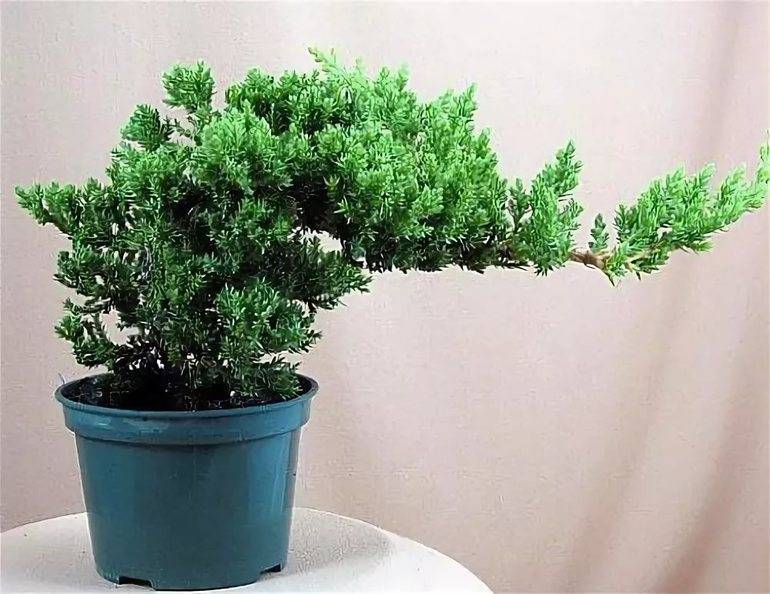
Juniper is not only beautiful, it will give the air in the room the freshness and aroma of pine needles.
Primary requirements
In order for the indoor juniper to feel comfortable, it needs an area abundantly lit by the sun with the possibility of airing. The soil is admissible poor, but light, allowing air to pass to the roots. A mixture of sand, turf and peat in equal proportions is suitable. You can do it yourself or buy it in a store.
Irrigation technology
Uniperus is a plant that prefers careful watering. It tolerates drought better than excessive moisture and waterloggedness. Irrigation is carried out 1-2 times a week or focusing on the drying of the soil. In the summer, spraying from a spray bottle will be useful. With the onset of cold weather, watering is reduced, gradually reducing to nothing.
Top dressing
In the summer, a mineral complex feeding twice a month is useful for the plant. Fertilizers are applied, having previously dissolved in water for irrigation.
Flowering period
Here are the basic guidelines:
- The optimal temperature regime is 20-24 degrees. Remove the juniper pot from the battery.
- Lighting - diffused, direct sunlight will negatively affect the condition of the shrub.
Dormant period
At this time, the plant needs coolness, but the thermometer should not fall below +12 degrees, this can cause the death of the juniper. You can move it to the balcony, where the bush can receive the required amount of light - the forced shadow will not do it good.
Do not water and fertilize at rest.
Preparation for wintering
Beginning in autumn, the juniper begins to be watered once a week, by November, irrigation ceases. The temperature decrease is also carried out gradually.
Growing indoor trees is not difficult. However, it is important to provide the plants with the necessary care, not forgetting that in the natural environment they begin to enter in a dormant state in the fall, in which they will stay until spring. It is important to help the "green pet" maintain natural biorhythms, then he will delight him with a beautiful view and often - lush flowering.


